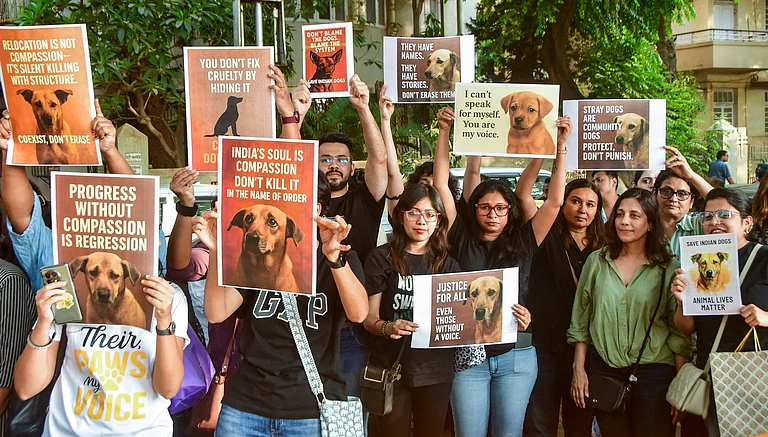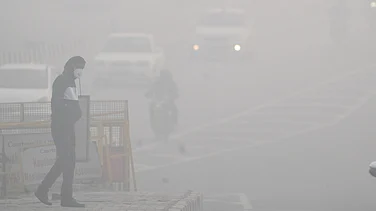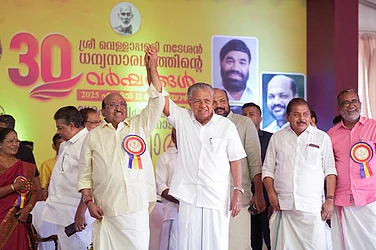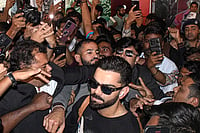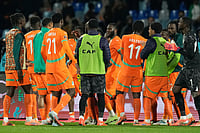It is not uncommon for inquiry committees to bury the truth by taking their own time, often years, before submitting their final reports. But the Prakash Singh committee on the violence that raged in Haryana for almost a fortnight in February, demanding reservation for Jats, has turned in its conclusion in just over two months. The committee, headed by the former BSF director-general, has named 80 officials who allegedly failed to contain the violence, among them five IAS and five IPS officers. Not surprisingly, Haryana chief minister Manohar Khattar has declared the report would not be made public. Prakash Singh spoke to Pragya Singh. Excerpts:
What exactly did your inquiry set out to find?
I was asked to inquire into the acts of omission and commission of administrative officers and police officers during the riots that took place in the second week of February in Haryana. We identified eight worst affected districts and toured them. In each district, 300-400 people came to see the committee. We gathered more than 2200 people's statements. We met the officers, starting with SHOs, on the basis of complaints from people, followed by DSP, supervising DSP, and sub-divisional magistrate, the SP and the DC, and so on. At Rohtak, we also talked to an IB team.
This was a Jat agitation, and the police force in many areas was dominated by Jats. How significant was this?
Yes, at a rough estimate that 60 per cent of the police force there is manned by Jat constabulary. But the important thing is that the reservation agitation was one aspect of the violence. Another equally strong, equally dominant aspect was the inter-community hostility. As the Jats were demanding reservation, some other sections in Haryana—the Sainis at the forefront—were systematically opposing reservation to Jats. Now, one Saini leader, who happens to be a Member of Parliament from BJP, would fulminate against the Jats. Emboldened by him, other Saini leaders would also fulminate. They really mocked the Jats, made fun of them. To give an example, comparing Jats with monkeys, or cursing them.
Is this what triggered the violence?
For almost a year, maybe longer, the abusing, taunting, ridiculing was on. It would hurt any community. This is an area where we felt that the non-Jats were very unfair too. The merits of reservations apart, the non-Jats were needling the Jats. They mocked them, made fun of them using highly un-parliamentary language. That was very, very objectionable but because he (BJP MP OP Saini) is from the BJP, the government did nothing.
Was there a clear pattern to show which community participated in the violence?
While on the one hand they (the Jats) vented their anger against the government they also vented their anger against the non-Jats. So non-Jat establishments, shops and other places were identified and attacked. They were reduced to ashes, completely devastated. Sainis and Punjabis were particularly targeted. In Bhiwani, we found the Jats and Rajputs had come face to face. People told us that because of the sizeable presence of Rajputs in the villages adjoining Bhiwani, that city was spared the kind of devastation that took place in other parts. It is the Rajputs who said that they will not allow this to happen.

Was the army lax in responding to the crisis?
The army’s role is something which I feel needs to be inquired into, jointly by the civil administration and the army. Because there were complaints by the people that things happened in the presence of the army. Yes, it is true that things did happen in the presence of the army, but in all likelihood they were not utilised in the manner and to the extent they should have been by the administration. There were instances where even in the presence of the DCs and SPs and in the army’s presence, people were allowed to clash.
Is all this why the government has not made your report public?
It is a bitter pill to swallow. I think this is the first time that officers at the highest level have been held accountable. The Muzaffarnagar riots judicial inquiry report was recently made public. After two years of deliberation they gave their report, on a riot in which 70-80 people were killed, and the honourable judge found only two persons responsible, one superintendent of police and one inspector of the Local Intelligence Unit. The matter ends there.
I have gone all out and indicted eighty plus people. That includes the highest of the civil administration and the highest of the police officials. No one has been spared. If you did not discharge your responsibilities, what did you do, sitting in Chandigarh—that is my question to officers. If you are responsible for law and order, what was your role during those 10-12 days? Just show me your work chart, I told them, and if I found it to be totally unsatisfactory I have been unequivocal in my criticism. You are sitting in Chandigarh in your air conditioned offices while people are getting killed, and this is all you have to show?
Is that why you're being called anti-IAS?
A number of misconceptions are being propagated about the report. Number one is that the report is anti-police and anti-administration. If you tally the 80 officers, the proportion of police to civil administration is 3:1. Another wrong impression is that it is an anti-IAS report. No, it is an anti-riots report, an anti-criminal report. If a district has given a sorry account of itself then it has been held responsible.
Some people are saying also that it is an anti-Jat report. Again, when we did a tally we found that of the 80 officers, in community terms also it is almost equally balanced. Not that we tried this—it just happened. It’s a brutally objective report in that nobody has been spared, as is the practice in many inquiries. And then we have completed this in just 71 days while evidence we have gathered is mind boggling. We have taken more than 130 petitions, spoken to more than 2200 people, looked at scores of video footage and talked to more than 200 officers. After all this we came up with a 450-page report.
Did you find incidents similar to Murthal elsewhere, and you did not go into the rapes alleged at Murthal?
Actually hardly any woman, and I believe no rural Jat woman came forward to us. If more women had come, other than some from NGOs etc, then perhaps the complaints (of crimes) against women would have come to our notice but nothing of the kind happened. We did not go into the details of Murthal because on that there is a separate SIT. We did look into lawlessness at Murthal, though. One incident was particularly bad there, at a place called JurasikcPark. A deputy SP, instead of taking action, deliberately, in a display of criminal negligence allowed the rioters to devastate the park. He had over 300 men. He could have gone into action and prevented the damage. Incidents like these shocked us beyond description. We felt that these men, who have shown criminal negligence, have to be brought to book. They have to be held accountable—and no sifarish, no consideration would weigh with us.
What was the alarming part about the findings?
During the riots the district administrations either collapsed, or nearly collapsed, or was found incompetent. In response, some senior officers from Chandigarh were sent to the districts. A senior IAS officer of the rank of assistant secretary was sent to Rohtak and given all powers of a district magistrate, for instance. It was an extraordinary situation. They did this because they found that the DC is ineffective, not able to exercise control.
What did you conclude on this aspect in your inquiry?
Look, any violence, whether communal riots or otherwise, can be contained by a responsive, alert and determined administration. And here the administration was reinforced by the central armed police forces and by the army on a huge scale. At its peak there were 74 columns (around 2000 soldiers) of the Indian Army, which really shocked me. It shocked us, because with this kind of force India could fight a limited invasion by Pakistan. On a rough calculation it will work out to 12 or 14 battalions.
So why couldn’t the officials and police in each district themselves bring it under control?
They (the officials deputed from Chandigarh) felt that the police is not discharging its duty. That the police has no deterrent effect. And this is because the police’s loyalties were divided. That is why the police had to be reinforced by the army. I have written in my report about the army's role and I hope there is some serious discussion on that. If the army gets sucked into internal security situations on such a large scale then probably if there is a war with Pakistan they will find themselves unequal to fighting the war because they will be used to fighting only rioters.
A shorter, edited version of this appears in print







